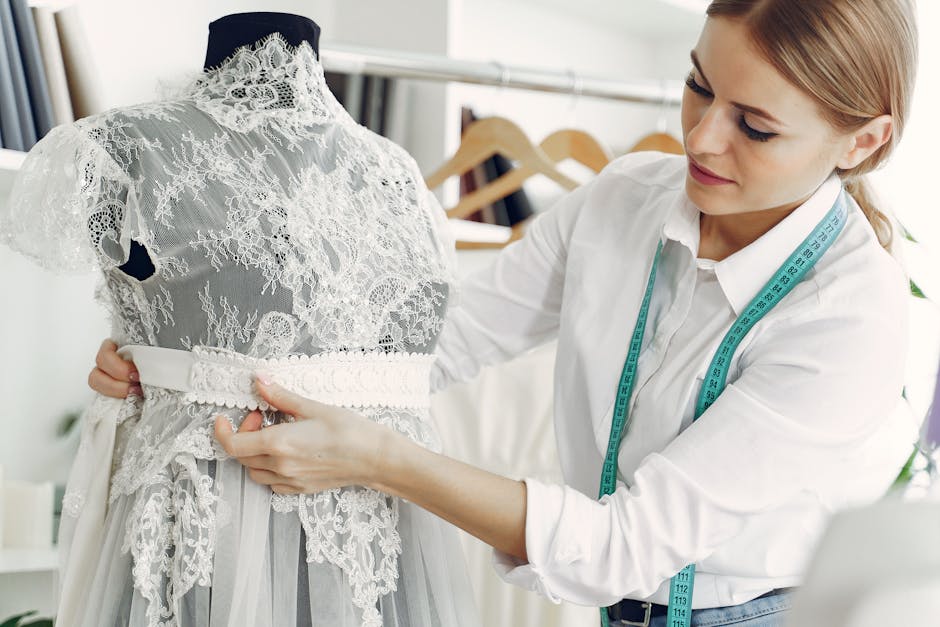8 Common Mistakes to Avoid with Wedding Dress Alterations
Embarking on the journey of altering your wedding dress can be both exciting and nerve-wracking. It’s crucial to be aware of the common mistakes to avoid throughout this process to ensure your dress fits you perfectly on your special day. Let’s delve into the key pitfalls to steer clear of when it comes to wedding dress alterations.
1. Why Proper Sizing is Crucial
One of the most common mistakes brides make during wedding dress alterations is not getting the proper sizing from the start. Remember, it’s easier to take a dress in than to let it out. Being measured by a professional seamstress or tailor is essential to ensure a precise fit that flatters your figure. Avoid rushing this step, as it can impact the overall look and feel of your gown on your big day.
Ill-fitting dresses can lead to discomfort, unsightly bulges, and even alteration nightmares. Always prioritize accuracy in sizing to prevent unnecessary stress and last-minute alterations that could compromise the integrity of your dress.
Additionally, fluctuations in weight are common closer to the wedding day, so be mindful of this and communicate any changes to your seamstress promptly. Remember, a well-fitted dress can make all the difference in how you look and feel as you walk down the aisle.
2. Choosing the Right Fabric for Alterations
When it comes to wedding dress alterations, the choice of fabric plays a significant role in the final outcome. Opting for a dress with intricate beading, delicate lace, or complex details may impact the alteration process. Selecting a fabric that is easier to work with can save you time, money, and potential headaches down the line.
Keep in mind that certain fabrics, such as silk or chiffon, require specialized handling during alterations to preserve their quality and integrity. Consulting with your seamstress about the fabric of your dress can help you make informed decisions and avoid any mishaps that could affect the overall look of your gown.
3. The Importance of Timing Your Alterations
Timing is everything when it comes to wedding dress alterations. Starting the alteration process too late can leave you scrambling to make significant changes close to your wedding day, increasing the risk of errors and unexpected issues.
Ideally, alterations should begin at least two to three months before your wedding to allow ample time for fittings, adjustments, and any unforeseen alterations that may be needed. Planning ahead and adhering to a timeline can ensure a stress-free and smooth alteration process, giving you peace of mind as your special day approaches.
4. Avoiding Over-Complicated Design Changes
While it’s tempting to envision elaborate design changes to your wedding dress, steering clear of over-complicated alterations is key to a successful outcome. Making drastic modifications to the original design, such as changing the neckline, adding embellishments, or altering the silhouette, can significantly impact the overall look of the dress.
Simplicity is often the best approach when it comes to alterations, especially if you want to maintain the essence and integrity of the original design. Focus on enhancing the existing features of the dress rather than overhauling it completely, ensuring a harmonious and elegant final look.
5. Ensuring Seamless Neckline Adjustments
Neckline adjustments are a common part of wedding dress alterations, but they require precision and expertise to ensure a seamless result. Communicating clearly with your seamstress about the desired neckline style and fit is essential to achieving the look you envision for your dress.
Whether you’re opting for a sweetheart neckline, off-the-shoulder design, or a classic V-neck, detailing your preferences and comfort level during fittings can help the seamstress make the necessary adjustments with finesse. Remember, the neckline frames your face and upper body, so getting it right is crucial for a cohesive and flattering overall look.
6. Avoiding Last-Minute Stitching Mishaps
One of the most stressful situations brides faces during wedding dress alterations is encountering last-minute stitching mishaps. Paying close attention to the details of the alterations during each fitting session can help catch any issues before they escalate.
Ensure that the seams, hems, and embellishments are secure and well-executed to prevent any surprises on your wedding day. Staying proactive and involved in the alteration process can minimize the risk of any last-minute mishaps and guarantee a flawless fit when you walk down the aisle.
7. Considering the Train Length Carefully
The train of your wedding dress adds a touch of elegance and drama, but it’s essential to consider the length carefully during alterations. Assessing the logistics of moving in a dress with a long train, especially if you’re having an outdoor wedding or plan to dance the night away, is crucial to ensure comfort and ease of movement.
Discussing the train length with your seamstress and exploring options such as bustling or shortening can help you find the right balance between style and practicality. Remember, you want to glide down the aisle with grace and dance the night away without any hindrances due to the train of your dress.
8. Avoiding Excessive Hemming
Hemming is a common alteration for wedding dresses, but excessive hemming can lead to a loss of the dress’s original proportions and design. Striking a balance between the desired length and maintaining the integrity of the dress is essential for a polished and sophisticated look.
Work closely with your seamstress to determine the ideal hem length based on your height, shoe choice, and overall aesthetic. Avoiding excessive hemming not only preserves the style of the dress but also ensures that the silhouette remains flattering and cohesive with the rest of your bridal ensemble.




